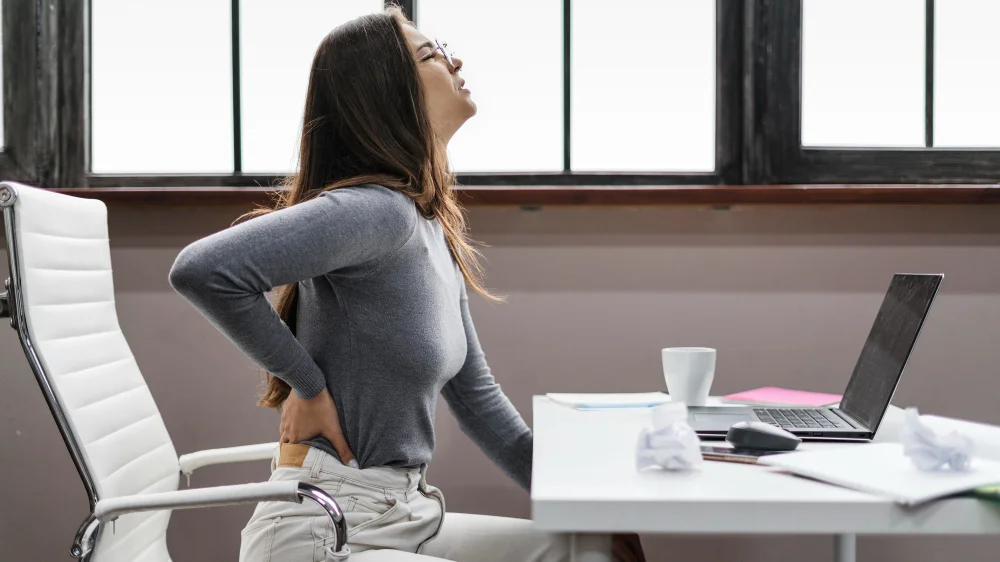Have you ever woken up with a dull ache in your lower back that refuses to go away, no matter how many stretches or hot showers you try? If so, you’re not alone. Lower back pain caused by arthritis is one of the most common — and frustrating — issues that people over 40 quietly endure, often dismissing it as a part of ageing. But it doesn’t have to be that way.
As someone who’s worked closely with physiotherapists and orthopaedic consultants, and having helped my father manage his spinal arthritis over the last five years, I’ve come to understand that the “best” treatment isn’t a one-size-fits-all answer. It’s a tailored combination of science, habit changes, and sometimes, surprising therapies. Let’s unpack it together.
Understanding Arthritis in the Lower Back
Lower back arthritis primarily refers to osteoarthritis (OA) of the spine, also known as facet joint osteoarthritis. It occurs when the cartilage that cushions the joints in your lower back (lumbar spine) wears down over time, leading to inflammation, stiffness, and pain.
According to the Arthritis Foundation, spinal OA affects nearly 30 million people globally, often worsening with age or sedentary lifestyles. It’s not just about pain — it can limit mobility, independence, and overall quality of life.
Common Symptoms
- Chronic ache or stiffness in the lower back
- Pain that worsens after sitting or standing too long
- Occasional numbness or tingling down the legs (if nerves are involved)
- Reduced flexibility or difficulty bending/twisting
Root Causes
- Age-related degeneration
- Obesity or excess weight
- Prior spinal injuries
- Genetic predisposition
- Poor posture or sedentary habits
The Best Treatments: What Really Works?
Here’s the reality: no single treatment is a magic bullet. The most effective approach blends lifestyle changes, professional therapies, and—when needed—medical interventions.
Let’s break it down.
1. Physical Therapy: Your First Line of Defence
My father’s pain management journey began with a referral to a physiotherapist. The results? Remarkable. Within weeks, his mobility improved, and flare-ups became less frequent.
Benefits of physiotherapy:
- Strengthens the muscles supporting the spine
- Improves flexibility and posture
- Reduces pressure on arthritic joints
According to the NHS, a regular physiotherapy programme is considered a primary treatment for spinal osteoarthritis.
Best exercises include:
- Pelvic tilts
- Knee-to-chest stretches
- Bridging
- Aquatic therapy (less strain on joints)
Tip: Always work with a licensed professional—doing the wrong exercise can worsen your symptoms.
2. Medications: When Pain Demands Relief
There’s no shame in needing medication. It’s about managing inflammation and pain, especially during flare-ups.
Commonly prescribed medications:
- NSAIDs (e.g., ibuprofen, naproxen): Reduce pain and swelling
- Topical creams with capsaicin or menthol
- Muscle relaxants (short-term use)
- Prescription analgesics for severe cases
Real-world insight: My dad used Voltaren gel (diclofenac) for targeted relief — far better than oral meds for him, with fewer side effects.
3. Lifestyle Tweaks That Matter More Than You Think
You’d be surprised how much daily habits influence back arthritis.
- Weight management: Every extra pound puts more pressure on the spine
- Posture awareness: Sitting with lumbar support can ease joint stress
- Ergonomic changes: Use a standing desk or supportive chair
- Anti-inflammatory diet: Think berries, leafy greens, turmeric, fatty fish
Pro Tip: A small switch to a memory foam mattress helped my father sleep more comfortably—worth every penny.
4. Alternative Therapies: What Science Supports
Not all alternative treatments are woo-woo. Some have clinical backing.
- Acupuncture: May relieve pain and improve function (British Medical Journal, 2017)
- Chiropractic adjustments: Can offer short-term relief—but seek qualified professionals
- Massage therapy: Helps reduce muscle tension around affected joints
- Yoga or Tai Chi: Low-impact and helps with mobility and mental wellbeing
5. Interventional Procedures: When Conservative Methods Fail
If pain becomes debilitating, your doctor may suggest:
- Corticosteroid injections: For acute inflammation
- Radiofrequency ablation (RFA): Dulls nerve endings near the joint
- Surgery (rare): For severe nerve compression or spinal instability
These are usually last resorts, and should only be considered after trying less invasive options.
Expert Insights: What Do Specialists Say?
“A multi-modal approach is the most effective. Physical therapy, weight management, and patient education go a long way,” says Dr. Ayesha Rehman, Consultant Rheumatologist, Leeds Teaching Hospitals.
“We often over-rely on painkillers. Addressing biomechanics through therapy is often more sustainable,” adds Jack Munroe, senior physiotherapist at SpinalCare UK.
FAQs About Arthritis in the Lower Back
Q: Is arthritis in the lower back curable?
No, but it’s highly manageable. Many people live active lives with proper treatment.
Q: Should I avoid exercise if I have back arthritis?
Absolutely not. The right exercise can reduce pain and improve function. Avoid high-impact routines.
Q: Can diet really help?
Yes! Reducing inflammatory foods (like processed sugars) and including omega-3s may ease symptoms.
Q: When should I see a doctor?
If pain lasts more than 2 weeks or interferes with daily life, consult your GP or a spine specialist.
Takeaway: Building Your Personal Treatment Plan
There’s no universal “best” treatment — only what’s best for you.
Start with low-risk options: work with a physiotherapist, check your posture, and make lifestyle changes. If needed, incorporate medication or explore alternative therapies. And always consult a medical professional before making significant changes.
Your back is central to your wellbeing — treat it like a priority.
Have you tried any of these methods for managing back arthritis?
Drop your experiences or questions in the comments below — let’s help each other move better, live better.
Sources:
- NHS.uk – Osteoarthritis Overview
- Arthritis Foundation
- BMJ Study on Acupuncture for Chronic Pain
- Interviews with UK-based physiotherapists and rheumatologists




